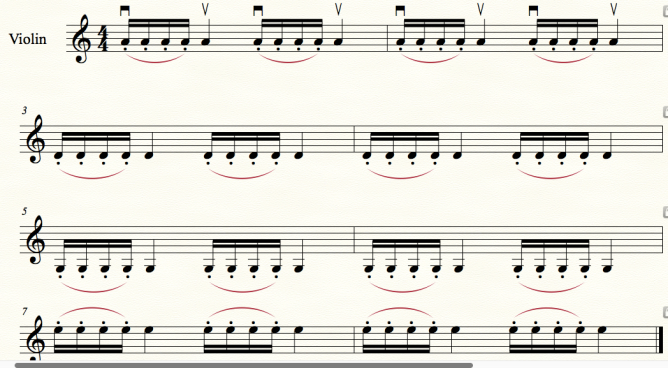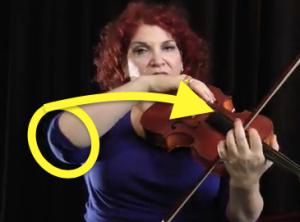Violin, Viola Bow Arm Elbow Height
Share
by Rozanna Weinberger
Elbow height can seem like such an illusive issue for many string players. Having studied with teachers like Karen Tuttle, who had a ‘natural approach to technique’ and pointed out the necessity of arm/back weight vs. force to produce sound, it is impossible to really gage the correct elbow height if its considered a ‘static event’. It needs to be in relation to preparing the arm weight to be delivered to the string being played. Without preparing the elbow in advance of landing on the string. its impossible to have the necessary momentum to deliver the weight. Further its essential the weight be ‘dropped into the string’ and for this to happen the elbow must be sufficiently elevated so the weight can eventually be dropped into the string. By incorporating a circular movement initiated from the elbow to drive the weight of the arm into the string, and sinking into the string, one discovers a comfortable feeling in the arm once the weight is released while producing a nice round sound.
Proper elbow height is essential for a great detache and interestingly a basic ricochet study aids in eventually mastering detache.

The opposite of this way of producing sound would probably have to be when the elbow is too high in relation to the rest of the arm. Pronating the elbow upward causes the rest of the hand & arm to have a vertical emphasis in relation to the string. I would argue that such an approach can also tend to ‘crush the sound and sound.’

In trying to master certain bow strokes such as detache in the upper half of the bow I have also discovered that when working at an entirely different type of bow stroke such as ricochet or even spicatto, the detache can be improved upon in the process. One reason might be because it seems impossible to produce a ricochet effectively to the tip of the bow effectively if the elbow is not at precisely the right height.
The best way to begin a ricochet exercise is to lead the arm around with the elbow initiating the momentum. While avoiding inefficient use of the shoulder is a key part of doing this exercise well, trying to ‘impose on the shoulder to willfully not move can feel like an endless painful austerity. There is one observational technique that can be done that will eventually train the shoulder to ‘go along for the ride’ rather than being the source of the elbows elevation.
At brief intervals of practicing this ricochet exercise, bring ones kinesthetic awareness to the right shoulder. See if its possible to ‘feel’ the muscles that are hyper extended in the shoulder. Feel the extent to which the humerus bone is extended out from the shoulder girdle. Then gently allow those muscles to relax back into the most unforced position. Being persistent in this kinesthetic focal point simultaneously trains the body to reroute its movements into a more efficient use of the muscles felt under the scapula. It may seem counterintuitive to imagine that the weight that goes into the instrument comes from under the scapula rather than the shoulder, in time it will start to feel like a yummy physical experience.
Muscles are important but noticing the bones can be equally insightful.

